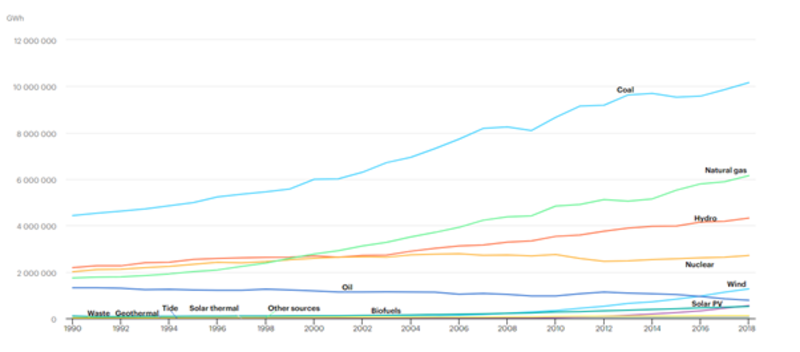Sustainable Investing
Renewable energy investing
Renewable energy is derived from sources that are naturally replenished, and can therefore continue to generate electricity subject to natural conditions. It differs from sources of energy that are finite and will eventually run out, led by fossil fuels, which cannot be replenished once extracted.
Sources of renewable energy
There are two ways to invest in renewable energy: either by buying the equities or bonds of the electricity or utility companies supplying the energy, or of the companies making components for the equipment that is needed to create power. This can be done through strategies such as the Robeco Smart Energy and Smart Mobility strategy, which specifically target this sector.
There are five principal sources of renewable energy:
Hydroelectric power is the oldest form of renewable energy, dating back to pre-Roman times, when the water wheel was used to turn gears that could grind corn. It remains the most common renewable source, in use industrially since the 19th century. Water power is usually harnessed by dams across rivers. The world’s largest hydroelectric plan is the Three Gorges dam complex in China, which can generate 22.5 gigawatts of electricity – equivalent to 40 average-sized coal-fired power stations. However, they also come with concerns over environmental damage and human rights violations, and have been blamed for diverting river systems.
Wind power is harnessed by turbines that are mainly laid out in ‘wind farms’, comprising hundreds of machines – many of which are offshore. Some turbines are now the size of skyscrapers, while large-scale wind farms are capable of generating enough electricity to power entire cities. The world’s largest wind farm at Gansu in China has 7,000 turbines that can generate 20 gigawatts of electricity.
Solar power is captured by photovoltaic panels, which convert the sun’s rays into heat. They rely on light refraction, so they don’t necessarily need the sun to be shining brightly to work. The world’s largest solar park at Jodhpur in India is spread across 40 square kilometers and can generate 2.2 gigawatts of electricity.
Biomass power is generated by burning biological materials that are either living or decaying, led by wood, plant, forest residues and compost material. It is either burnt in power stations or converted into biofuels such as ethanol, which can power normal internal combustion engines. Some crops such as rapeseed are specifically grown as biofuels. Biomass is not considered as environmentally friendly as other renewable sources since its burning generates greenhouse gases. Many coal-fired plants such as the giant 4 gigawatt Drax complex in the UK are being converted to biomass in order to reduce emissions.
Geothermal power is harnessed from the Earth’s natural sources of heat, led by volcanic activity. It is the source of 30% of all electricity power in Iceland, which taps into thermal springs heated by molten rock lying thousands of meters below the surface. However, this form of renewable energy is restricted to areas with volcanic sources, and generates only about 14 gigawatts of power globally each year.
Creating returns that benefit the world we live in

Energy generation by source: coal remains the world leader, while hydro is third.
Source: IEA
New sources of energy
One source of renewable energy that has the potential to be tapped is tidal power. This is a form of hydroelectric power that spreads barrages across river estuaries to harness the tide coming in and out. However, this requires a much larger geographical reach than a dam to tap into tides, and is much weaker than water continuously flowing through a dam or over a waterfall.
There is also growing interest in green hydrogen. Water is broken down into its component parts of hydrogen and oxygen using electrolysis that is powered by electricity drawn from renewable sources. The hydrogen that is released can then be used to power fuel cells that could replace internal combustion engines in the transport industry. However, large-scale electrolysis equipment is required to separate the hydrogen, making it much more expensive than other renewable sources at present.
Meeting the Paris Agreement
The fact that virtually all sources of renewable energy are harnessed by turbines and not burned means they do not directly produce greenhouse gas emissions. They are therefore seen as playing a major role in achieving the levels of decarbonization needed to meet the Paris Agreement.
And renewable energy is growing in popularity. Once a niche industry, it has accounted for 28% of the world’s electricity generation in 2020, according to the International Energy Agency’s (IEA) Global Energy Review.1 Of this, 17% comes from hydro, 4% from wind, 3% from solar, 2% from biofuels, and 2% from other sources such as geothermal.
However, the sector also carries ESG risks, such as poor labor conditions in the mining of minerals needed for renewable energy equipment, and deforestation or land clearance in making space for large-scale solar parks.
Footnote
1Global Energy Review 2020